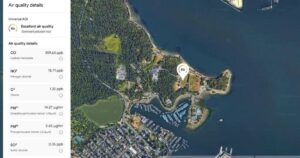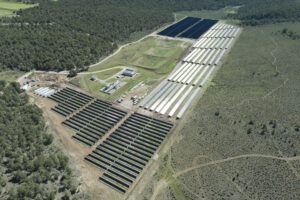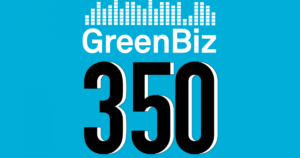
Europe has long been the trendsetter in policy and regulation around environmental, social and governance issues. The Corporate Sustainability Reporting Directive (CSRD) is the latest in a line of European Union policies intended to nudge economic and investment activity towards more sustainable outcomes.
The CSRD replaced the Non-Financial Reporting Directive (NFRD), which only covered the disclosure requirements for about 11,000 EU companies. In contrast, the CSRD will require nearly 50,000 companies to enhance their reporting around sustainability. This number includes about 10,000 companies outside the EU, and it doesn’t just include the largest of the large companies.
The CSRD was adopted by the EU Council in November. EU companies already subject to the NFRD will have to begin compliance with the CSRD, which means reporting in 2024. Those for whom this reporting will be new, including companies outside the EU, have until 2025 to begin complying.
The NFRD was never mandatory. As a result, investors, regulators and civil society groups were often frustrated with the lack of sustainability-related information from companies and the lack of comparability of that data. The European Parliamentary Research Service (EPRS) recently released an implementation appraisal on the NFRD that highlighted many shortcomings of the NFRD:
- 71 percent of respondents believed the non-financial information contained in the NFRD reports was deficient in terms of comparability
- 82 percent believed that CSRD’s requirements for companies to use a common standard would address identified issues
The purpose of the CSRD is to provide investors and businesses with more information about the sustainability of companies operating in the EU, that is timely, consistent and comparable.
In essence, the CSRD is becoming the de facto sustainability disclosure regulation for large global companies; as companies with significant business in Europe will have to adhere to the rules Europe sets down.
The rules will cover both public and private business that satisfy two of the following criteria:
- Have more than 250 employees
- Have net turnover of more than $44.51 million
- Have a balance sheet of more than $22.25 million
Compliance with CSRD isn’t that far away. Companies that meet the reporting requirements will have to submit their first report of aligning with CSRD by Jan. 1, 2025. Smaller and medium-sized entities (SMEs) won’t have to comply with the rules until January 2026.
Companies outside of Europe that do business in the EU will also be covered by the new rules — companies that generate total revenue of $167 million in the EU and have at least one branch or subsidiary in the EU with more than $44.51 million in net revenue will be required to comply with the new disclosure requirements.
In essence, the CSRD is becoming the de facto sustainability disclosure regulation for large global companies; as companies with significant business in Europe will have to adhere to the rules Europe sets down. The hope of European regulators — and sustainability-minded professionals around the world — is that this higher disclosure bar will export European best practices in disclosure globally. As large companies in global markets are forced to raise their standards, these disclosure standards will cause other companies in those markets to follow the more stringent disclosure standards set by the EU in order to keep up with best practices.
What is covered?
In addition to information already required by the NFRD, companies that comply with the CSRD will have to publish information related to:
- Environmental protections
- Greenhouse gas emissions targets
- Social responsibility and treatment of employees
- Respect for human rights
- Anti-corruption and bribery
- Diversity on company boards
- Double materiality
- How sustainability risks might affect performance
- The company’s impact on society and the environment
- Materiality assessments
- Forward-looking ESG targets and progress
- Disclosures on intangible capitals (social, human, intellectual)
- Due diligence processes in relation to sustainability
- Potential adverse impacts due to sustainability issues
Companies will be required to set annual ESG targets and report their process hitting these targets, including transition plans (if any).
The CSRD will require third-party assurances, including integration into the auditor’s report, a requirement not covered by the NFRD. This information will be required to be presented in a company’s annual financial reports, not in a separate sustainability report. Assurances can at first be “limited” but must reach the threshold of “reasonable” assurances by 2028. For those of you out there who are not accountants (good for you), reasonable assurances amount to an auditor affirming that the information reported is materially correct, while limited assurances simply state that the auditor is not aware of any material modifications that need to be made.
The European Financial Reporting Advisory Group (EFRAG) is drafting the upcoming EU Sustainability Reporting Standards (ESRS) that the CSRD will adopt as its reporting standard. The European Commission is due to adopt the initial ESRS standards in mid-2023.
Start now. Get buy-in from everyone
If all of this sounds like a lot of work, you are right. If all of this sounds like a lot of work and a little bit intimidating if you are not a European company used to European regulation, accounting and disclosure standards, you are right again. Companies outside the EU that will be subject to CSRD reporting have realized the daunting task ahead of them. Those ahead of the curve have already started the process of adjustment to the CSRD landscape.
Chris Librie, senior director of ESG at Applied Materials, acknowledged that CSRD will require companies outside the EU to change their perspective on sustainability. “CSRD is pretty comprehensive,” Librie said. “It involves double materiality, which may bring into scope things that we may not have considered. For example, we haven’t traditionally looked at biodiversity, but that may come up.”
Most companies will need to expand their ability to measure and manage sustainability issues in their own operations; as well down their supply chains to comply with CSRD disclosure rules.
“Our ESG team is fairly small,” Librie said, “so we will be reaching to other divisions such as human resources, environmental health and safety and others, as well as our outside auditors and consultants. The number of potential topics are so many that we are taking a team approach to develop a structured approach to the CSRD process.”
The race is on to train financial professionals for the transition. Several organizations are working with companies to help them prepare for the transition. One of these is Accounting for Sustainability (A4S). A4S was established by King Charles III in 2004, with the aim of working with chief financial officers and other financial leaders to drive a shift towards more sustainable business models. A4S routinely hosts workshops to share best practices and build knowledge of financial professionals to bring them up to speed.
The number of potential topics are so many that we are taking a team approach to develop a structured approach to the CSRD process.
Brad Sparks, executive director of A4S Foundation U.S., emphasized how A4S is seeing significant interest from finance and accounting professionals that A4S works with around CSRD.
“CSRD has become part of the reporting workshops that we host,” Sparks said. “We also started a new controllers forum and had a meeting earlier this year where we brought in someone from EFRAG to discuss the emerging ESRS standards. The forum is designed for chief accounting officers, controllers and ESG controllers to exchange insights, challenges and responses to sustainability issues among peers. Our initial meeting had a focus on double materiality — a topic that is new to many in the finance and accounting community.”
Part of the learning curve for those outside the EU will be navigating the differences in accounting standards, investor expectations and legal systems that underpin EU regulation and norms outside the EU. “Finance and accounting professionals in the United States are seeking additional guidance to help with the emerging standards,” Sparks said. “In general, global accounting standards are typically principles-based, while U.S. accounting (GAAP) is typically rules-based. This is similar with the ESRS following a more principles-based approach, which some in the U.S. view as more challenging to implement.”
Although adjusting to a CSRD world will take time and resources, in the end, the goal is to provide investors, policymakers, civil society and companies themselves with better information. It may move sustainability reporting more to the mainstream, which has both positive and negative implications.
What companies and investors can do to prepare
Preparing for CSRD reporting will be a step change in managing and measuring sustainability data for many companies outside the EU. Companies that need to report under the CSRD standard will need to start now if they haven’t already: January 2025 isn’t that far away. There are steps companies can take to get ready. Here are just a few places to start:
- Perform a gap analysis to determine current holes in sustainability measurement and management system.
- Review EFRAG exposure draft ESRS rules.
- Determine who within an organization will lead the CSRD process and determine what other people within an organization will be needed in the CSRD process.
- Determine what outside resources such as accountants and consultants will be needed to undertake CSRD compliance reporting.
- Coordinate with others within your industry to share best practices.
“I see this possibly driving companies toward more integrated reporting,” Librie said. “I think ultimately we will see more 10-Ks and sustainability reports that merge, so we will have a one-stop shop for all this information. That is a positive but a potential negative is that in a 10-K type document, you can’t be as verbose. You have to be more economical about telling your story, and that might make ESG engagement more challenging.”
“Companies are seeking to understand how they can comply with reporting requirements in an effective, efficient and impactful manner,” Sparks said. “They want to understand what best practices are and are looking for more guidance.” Sparks noted that A4S plans to hold more workshops around CSRD in the future, as it sees increasing demand from the CFOs and financial professionals they meet with.
- SEO Powered Content & PR Distribution. Get Amplified Today.
- PlatoAiStream. Web3 Data Intelligence. Knowledge Amplified. Access Here.
- Minting the Future w Adryenn Ashley. Access Here.
- Source: https://www.greenbiz.com/article/how-new-eu-directive-will-rewrite-esg-reporting
- :has
- :is
- :not
- :where
- $UP
- 000
- 1
- 10
- 11
- 2021
- 2024
- 2026
- 50
- 7
- 8
- a
- ability
- About
- Accounting
- acknowledged
- activity
- addition
- Additional
- address
- adhere
- Adjustment
- adopt
- adopted
- adverse
- advisory
- affect
- ahead
- aim
- All
- already
- also
- among
- amount
- an
- analysis
- and
- annual
- any
- applied
- appraisal
- approach
- ARE
- around
- article
- AS
- At
- auditors
- away
- Balance
- Balance Sheet
- bar
- BE
- become
- becoming
- been
- begin
- believed
- BEST
- best practices
- Better
- Bit
- boston
- both
- Branch
- bring
- brought
- build
- business
- businesses
- but
- by
- CAN
- Cause
- CFOs
- chains
- challenges
- challenging
- change
- Charles
- chief
- Chief Financial
- come
- commission
- Common
- community
- Companies
- company
- Company’s
- comparable
- compliance
- comprehensive
- considered
- consistent
- consultants
- continue
- contrast
- Council
- cover
- covered
- criteria
- Current
- curve
- data
- Demand
- designed
- Determine
- develop
- dialogue
- differences
- diligence
- Director
- disclosure
- discuss
- do
- document
- Doesn’t
- double
- down
- draft
- drive
- driving
- due
- Earlier
- EC
- Economic
- Effective
- efficient
- emerging
- Emissions
- emphasized
- end
- engagement
- enhance
- entities
- environmental
- ESG
- essence
- established
- Ether (ETH)
- EU
- Europa
- Europe
- European
- european commission
- european union
- Event
- example
- exchange
- executive
- Executive Director
- Expand
- expectations
- export
- Exposure
- fairly
- far
- few
- finance
- financial
- First
- Focus
- follow
- following
- For
- Forum
- Foundation
- from
- frustrated
- future
- GAAP
- gap
- GAS
- General
- generate
- get
- Global
- global markets
- Globally
- goal
- good
- governance
- Group
- Group’s
- guidance
- had
- Have
- Health
- help
- here
- higher
- Highlighted
- hitting
- hold
- Holes
- hope
- host
- hosts
- How
- HTML
- HTTPS
- human
- Human Resources
- i
- identified
- if
- Impact
- impactful
- Impacts
- implement
- implementation
- implications
- in
- include
- includes
- Including
- increasing
- industry
- information
- initial
- insights
- integrated
- integration
- intellectual
- interest
- intimidating
- into
- investment
- investor
- Investors
- issues
- IT
- ITS
- Jan
- January
- jpg
- june
- just
- Keep
- King
- King Charles
- knowledge
- Lack
- landscape
- large
- largest
- latest
- lead
- leaders
- learning
- least
- Legal
- like
- Limited
- Line
- little
- Long
- looked
- looking
- Lot
- made
- Mainstream
- make
- manage
- management
- management system
- managing
- mandatory
- manner
- many
- Markets
- material
- materially
- materials
- May..
- means
- measure
- measuring
- Meet
- meeting
- Merge
- might
- million
- models
- Modifications
- more
- move
- navigating
- nearly
- Need
- needed
- negative
- net
- net revenue
- New
- node
- noted
- November
- now
- number
- of
- officers
- often
- on
- ONE
- only
- operating
- Operations
- or
- order
- organization
- organizations
- Other
- Others
- our
- out
- outcomes
- outside
- own
- Parliamentary
- part
- People
- percent
- perspective
- Place
- Places
- plans
- plato
- Plato Data Intelligence
- PlatoData
- policies
- policy
- Policy and Regulation
- policymakers
- positive
- possibly
- potential
- practices
- premier
- Prepare
- presented
- pretty
- private
- process
- processes
- professionals
- provide
- public
- publish
- purpose
- Race
- raise
- reach
- reaching
- ready
- realized
- reasonable
- recently
- Regulation
- Regulators
- related
- relation
- released
- replaced
- report
- Reported
- Reporting
- Reports
- require
- required
- requirement
- Requirements
- research
- Resources
- respondents
- responses
- responsibility
- result
- revenue
- risks
- routinely
- rules
- s
- Safety
- Said
- scope
- see
- seeing
- seeking
- sees
- senior
- separate
- service
- set
- Sets
- several
- Share
- shift
- Shop
- shortcomings
- significant
- similar
- simply
- small
- smaller
- SMEs
- So
- Social
- Society
- some
- Someone
- Sparks
- speed
- standard
- standards
- start
- started
- State
- States
- Step
- Steps
- Story
- structured
- subject
- submit
- subsidiary
- such
- supply
- Supply chains
- Sustainability
- sustainable
- system
- Systems
- Take
- taking
- targets
- Task
- team
- terms
- than
- that
- The
- The Future
- the information
- the world
- their
- Them
- themselves
- There.
- These
- they
- things
- think
- third-party
- this
- this year
- those
- threshold
- time
- to
- topic
- Topics
- Total
- toward
- towards
- traditionally
- Train
- transition
- treatment
- Trends
- trendsetter
- turnover
- two
- type
- typically
- u.s.
- Ultimately
- under
- understand
- union
- United
- United States
- upcoming
- use
- used
- View
- want
- was
- we
- WELL
- were
- What
- which
- while
- WHO
- will
- with
- within
- Work
- working
- works
- Workshops
- world
- would
- year
- you
- Your
- zephyrnet









